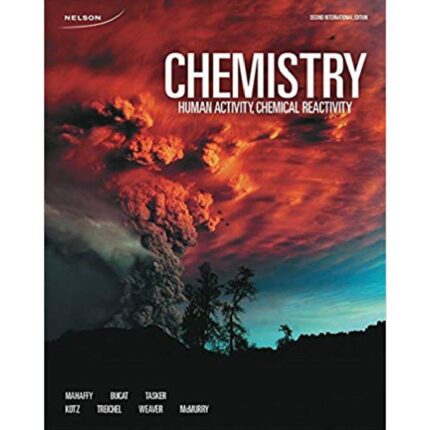Chapter 11
Gases
1. What is the name given to the attractive forces that hold particles together in the condensed phase?
A. ionic bonds
B. covalent bonds
C. intermolecular forces
D. electronegativity
E. electron attraction
Blooms: 2. Understand
Difficulty: Easy
Gradable: automatic
Subtopic: Types of Intermolecular Forces
Topic: Intermolecular Forces
2. Which are considered van der Waals forces?
I. dispersion forces
II. dipole-dipole interactions
III. hydrogen bonding
A. I and III
B. II only
C. III only
D. I, II, and III
E. I only
Blooms: 2. Understand
Difficulty: Easy
Gradable: automatic
Subtopic: Types of Intermolecular Forces
Topic: Intermolecular Forces
3. Which of the following is defined as the attractive forces between polar molecules?
I. dispersion forces
II. dipole-dipole interactions
III. ion-dipole interactions
A. I and III
B. II only
C. III only
D. I, II, and III
E. I only
Blooms: 2. Understand
Difficulty: Easy
Gradable: automatic
Subtopic: Molecular Polarity (Dipole Moment)
Subtopic: Types of Intermolecular Forces
Topic: Intermolecular Forces
Topic: Molecular Shape
4. In a sample of hydrogen iodide, __________________ are the most important intermolecular forces.
A. dipole-dipole forces
B. London dispersion forces
C. hydrogen bonding
D. covalent bonds
E. polar covalent bonds
Blooms: 4. Analyze
Difficulty: Easy
Gradable: automatic
Subtopic: Bond Polarity
Subtopic: Molecular Polarity (Dipole Moment)
Subtopic: Types of Intermolecular Forces
Topic: Chemical Bonding
Topic: Intermolecular Forces
Topic: Molecular Shape
5. The strongest intermolecular interactions between hydrogen sulfide (H2S) molecules arise from
A. dipole-dipole forces.
B. London dispersion forces.
C. hydrogen bonding.
D. ion-dipole interactions.
E. disulfide linkages.
Blooms: 4. Analyze
Difficulty: Easy
Gradable: automatic
Subtopic: Bond Polarity
Subtopic: Molecular Polarity (Dipole Moment)
Subtopic: Types of Intermolecular Forces
Topic: Chemical Bonding
Topic: Intermolecular Forces
Topic: Molecular Shape
6. Which substance should exhibit hydrogen bonding in the liquid phase?
A. PH3
B. He
C. H2S
D. CH4
E. CH3OH
Blooms: 4. Analyze
Difficulty: Easy
Gradable: automatic
Subtopic: Bond Polarity
Subtopic: Molecular Polarity (Dipole Moment)
Subtopic: Types of Intermolecular Forces
Topic: Chemical Bonding
Topic: Intermolecular Forces
Topic: Molecular Shape
7. Which of the responses includes all of the following that can form hydrogen bonds with water molecules?
I. Na+, II. CH3COOH, III. C2H6, IV. CH3NH2
A. I and II
B. I and III
C. II and III
D. II and IV
E. III and IV
Blooms: 5. Evaluate
Difficulty: Easy
Gradable: automatic
Subtopic: Bond Polarity
Subtopic: Molecular Polarity (Dipole Moment)
Subtopic: Types of Intermolecular Forces
Topic: Chemical Bonding
Topic: Intermolecular Forces
Topic: Molecular Shape
8. Which substance will exhibit hydrogen bonding between molecules?
A. (CH3)3N
B. CH3–O–CH3
C. CH3CH2–OH
D. CH3CH2–F
E. HI
Blooms: 5. Evaluate
Difficulty: Easy
Gradable: automatic
Subtopic: Bond Polarity
Subtopic: Molecular Polarity (Dipole Moment)
Subtopic: Types of Intermolecular Forces
Topic: Chemical Bonding
Topic: Intermolecular Forces
Topic: Molecular Shape
9. Which one of the following pure substances will exhibit hydrogen bonding?
A. CH4
B. H2C=CH2
C. H2O
D. CHCl3
E. CHF3
Blooms: 5. Evaluate
Difficulty: Easy
Gradable: automatic
Subtopic: Bond Polarity
Subtopic: Molecular Polarity (Dipole Moment)
Subtopic: Types of Intermolecular Forces
Topic: Chemical Bonding
Topic: Intermolecular Forces
Topic: Molecular Shape
10. Which of the following atoms does not participate in hydrogen bonding?
A. S
B. O
C. F
D. N
E. H
Blooms: 5. Evaluate
Difficulty: Easy
Gradable: automatic
Subtopic: Bond Polarity
Subtopic: Molecular Polarity (Dipole Moment)
Subtopic: Types of Intermolecular Forces
Topic: Chemical Bonding
Topic: Intermolecular Forces
Topic: Molecular Shape













Reviews
There are no reviews yet.